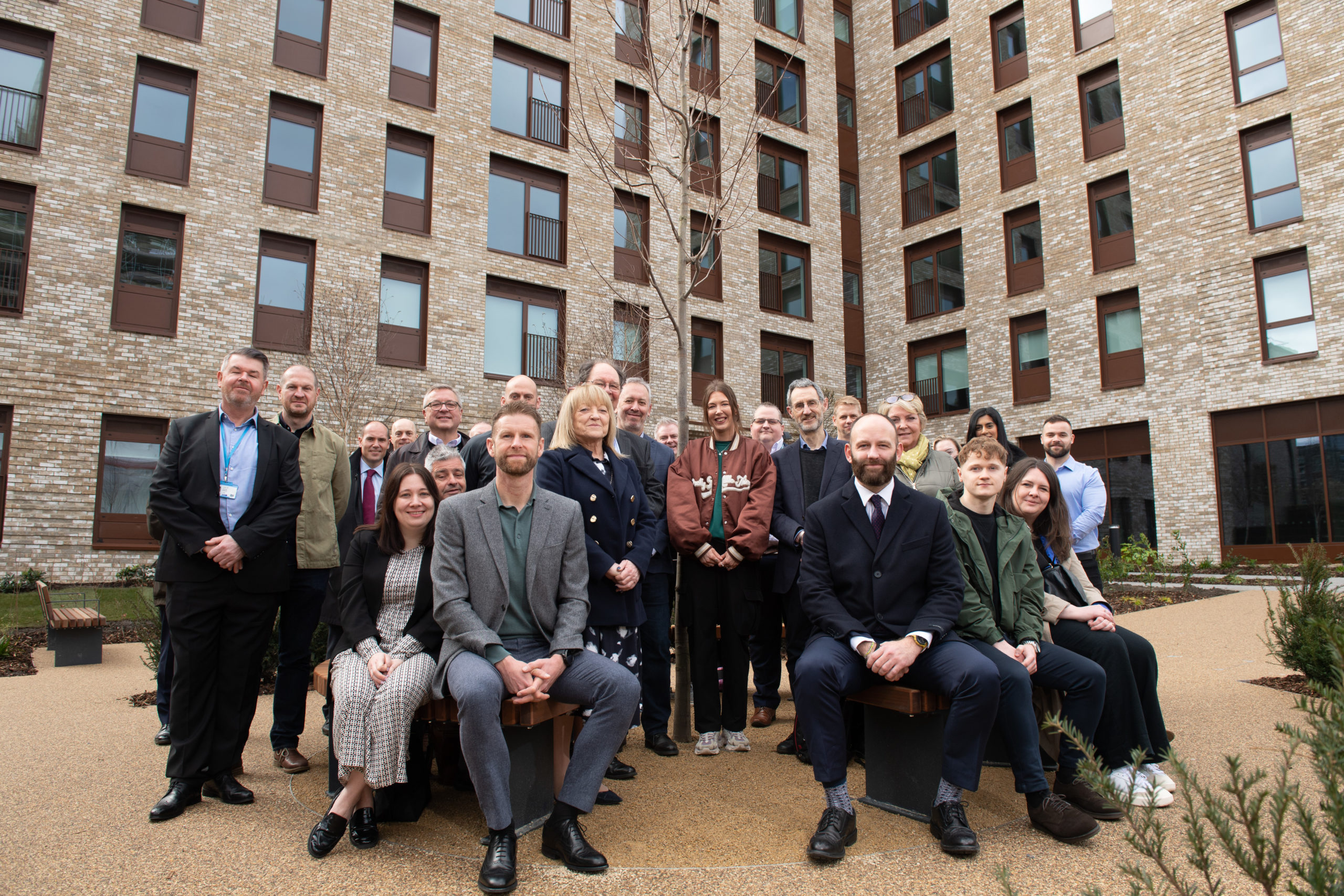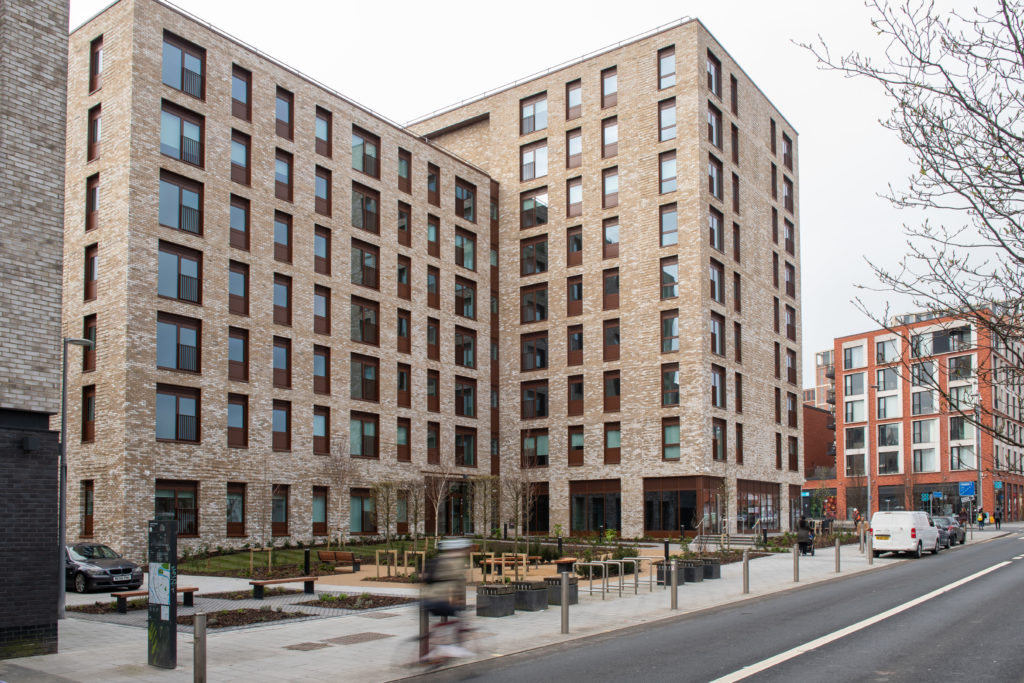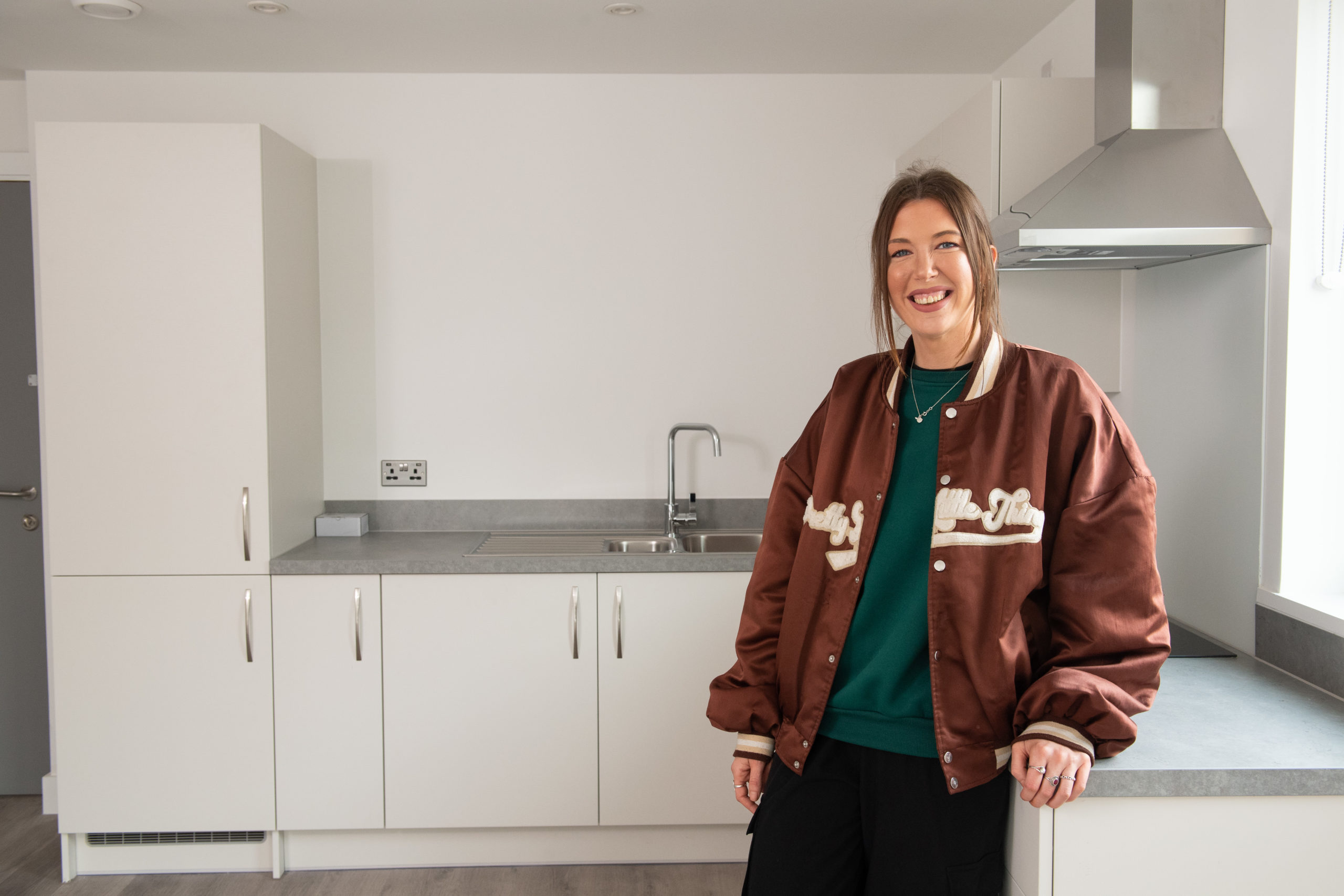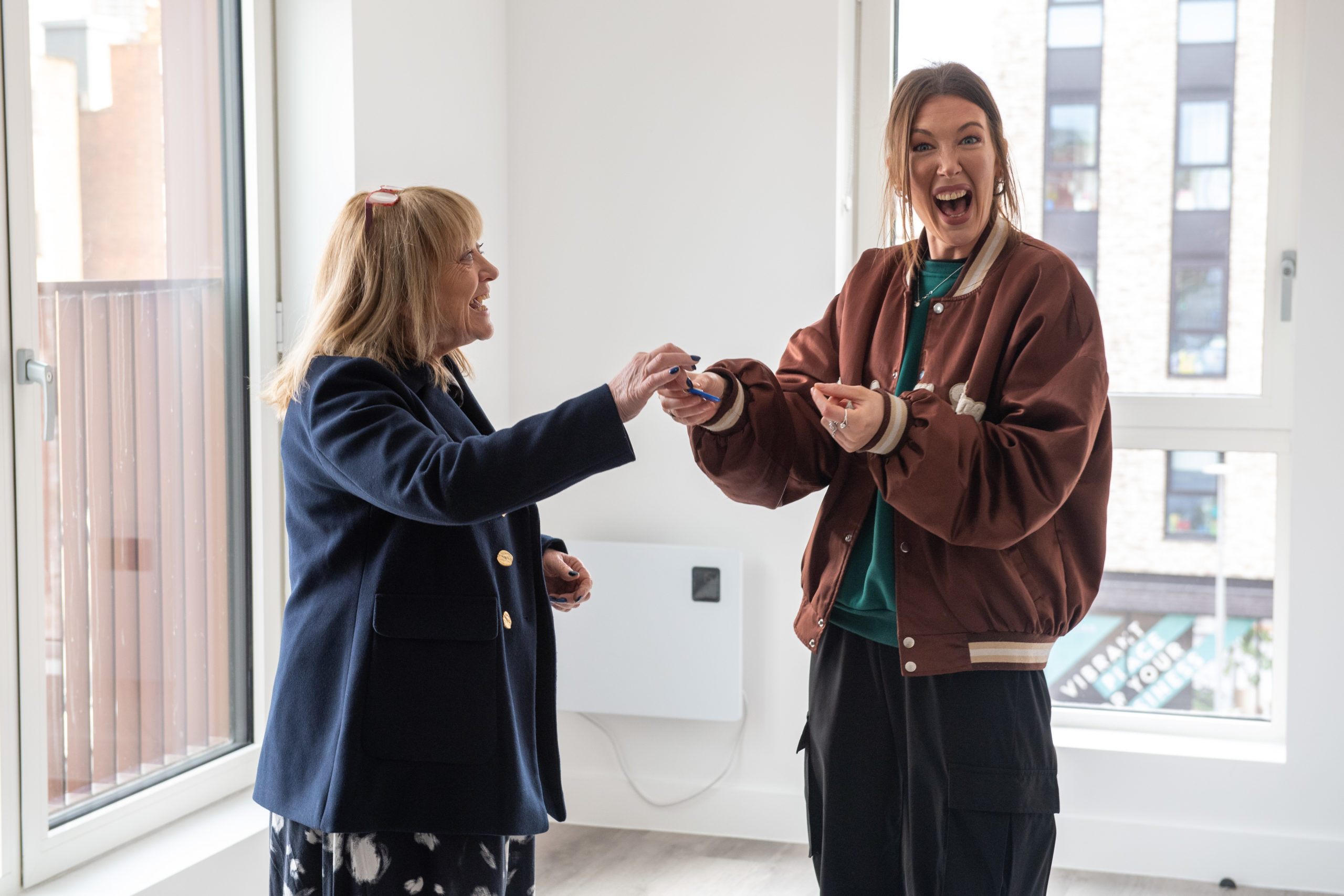Greener, cleaner, more affordable homes delivered in Salford
19.03.24 5 min read

Greenhaus – the largest Passivhaus affordable housing scheme in the North West – has completed, bringing 96 highly-sustainable, affordable homes to Chapel Street in Salford.
Bridging a gap in the housing sector for affordable, high specification living, Greenhaus has been delivered by ECF – our joint venture with Legal & General and Homes England – alongside Salford housing association, Salix Homes, and supported by Salford City Council.
At Muse, we’re passionate about creating places that are fit-for-the-future and are designed with both people and the environment in mind.
With Greenhaus, which is built to Passivhaus Classic certified standard, residents at the nine-storey development will benefit from a range of features which deliver both a healthier living environment and cost-effective homes.
Triple glazing, air source heat pumps, and the latest in insulation technology contribute to higher thermal comfort and improved air quality, while at the same time reducing the risk of damp, mould, and condensation.
As a result of its eco-friendly credentials, operational energy use at Greenhaus will be between 70-90% less than traditional housing too, reducing residents’ carbon footprints and lowering energy bills in the process.
A mixed-tenure development of one- and two-bedroom homes – including two accessible apartments on the ground floor – Greenhaus comprises homes for social rent, affordable rent and through the Rent to Buy scheme, making it a truly pioneering residential scheme within the North West.
By building places that have a transformative effect on communities and are built to last, we’re showing that responsible regeneration is both achievable and financially viable.
Commenting on the completion of this ground-breaking development, Simon Hourihan, Project Director, said:
One of the first residents to move into Greenhaus is mature student Harriette Matthews. The 29-year-old, who is studying to be a counsellor, has been staying on her dad’s sofa in his one-bedroom flat for the past seven months, following a relationship breakdown. Harriette has autism and is a sufferer of scoliosis, which is a curvature of the spine, so her difficult living conditions have been affecting both her physical and mental health. Allocated one of the 13 apartments available for affordable rent at Greenhaus, Harriette says moving into Greenhaus will transform her life: “I just can’t put into words how much of a difference having my own home will make to my life. When I got the call from my housing officer at Salix Homes to say I had a place at Greenhaus, I just couldn’t believe it – I feel so lucky.”
Sue Sutton, Chief Executive at Salix Homes, said: “We are incredibly proud to welcome the first residents to Greenhaus, and see our vision for high quality, affordable and sustainable housing brought to life.
“With the rising cost of living, a shortage in the supply of affordable and social housing, and a need to address the challenges posed by the climate crisis, Greenhaus demonstrates what can be achieved through effective partnership working, and a shared desire to create cleaner, greener and healthier homes that are fit for the future and won’t need retrofitting.
“To help use the development’s green credentials effectively, Salix Homes will also be embarking on a careful education and monitoring process, supporting residents to get the most of out of their new homes. We’ll be monitoring the air quality and energy usage, so we can track the long-term benefits and identify lessons learned for future developments.”
Salford City Mayor Paul Dennett was at the official launch of Greenhaus (on Monday 18th March) where he hailed the development as “the benchmark” for new-build, affordable, and sustainable homes, and commented:

The leading low-energy design standard, Passivhaus buildings are so well constructed, insulated, and ventilated that they retain heat from the sun and the activities of their occupants, requiring very little additional heating or cooling.
Outside, residents will also benefit from electric vehicle charging points and a public square complete with landscaping to foster and encourage community spirit.
Greenhaus is part of ECF’s £1bn, 50-acre Salford Central transformation being delivered in partnership with Salford City Council, and takes the overall percentage of affordable homes delivered by ECF to 25% across the Chapel Street area of the masterplan.
The homes were built by lead contractor Eric Wright Construction and designed by architects Buttress.
Following the success of Greenhaus, work is due to start soon on a second Passivhaus development on nearby Peru Street, which will deliver a further 100 affordable and highly sustainable apartments.

